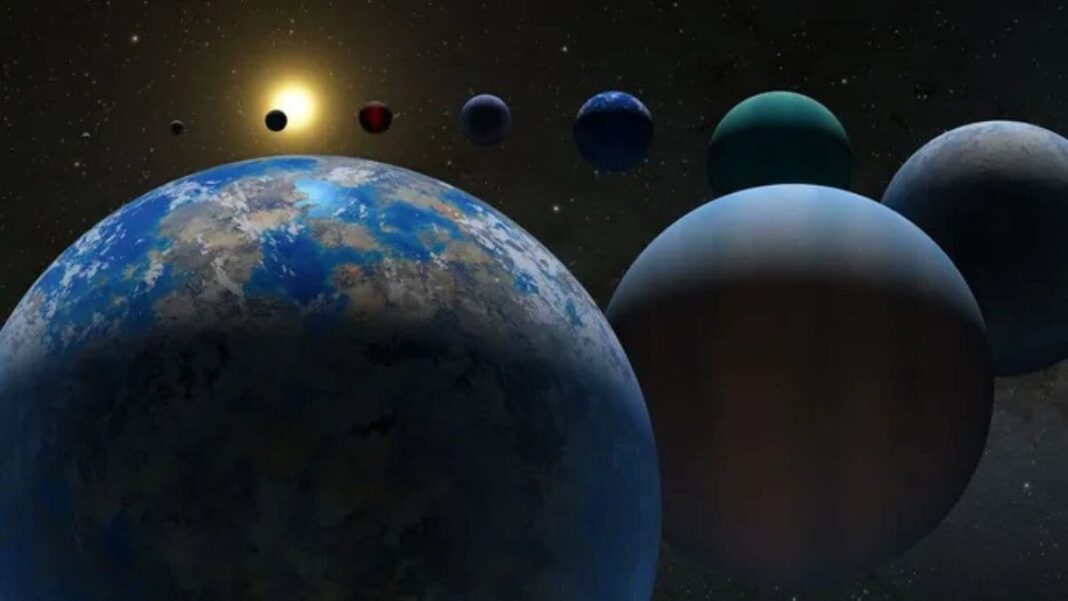A Groundbreaking Discovery: New Method for Oxygen Formation in Planetary Atmospheres
In a recent study led by Shan Xi Tian and Jie Hu from the University of Science and Technology of China, a revolutionary discovery has been made regarding the formation of molecular oxygen in carbon dioxide-rich planetary atmospheres. This finding challenges traditional beliefs about oxygen production and its implications for the search for extraterrestrial life.
The Story So Far
Imagine a world where oxygen, the elixir of life, is not just a byproduct of biological processes but can also be formed abiotically. This study delves into a unique pathway where helium ions react with carbon dioxide to give birth to molecular oxygen. Through advanced experimental setups and meticulous analysis, researchers reconstructed this groundbreaking reaction, shedding light on the possibility of oxygen existence on other planets without the need for life.
Insights from the Study
The study showcases a fascinating connection between helium ions and carbon dioxide, unveiling a novel mechanism for oxygen formation. By utilizing cutting-edge technology like time-of-flight mass spectrometry and ion velocity mapping, researchers were able to simulate and validate this revolutionary reaction under controlled conditions. This discovery not only expands our understanding of oxygen production in planetary atmospheres but also opens up new avenues for exploring the presence of oxygen on distant worlds.
Potential Implications for Mars and Beyond
One intriguing aspect highlighted by this study is the potential occurrence of this oxygen-forming reaction in Mars’ upper atmosphere. With the prevalence of carbon dioxide and helium ions in the Martian environment, the possibility of molecular oxygen generation becomes a tantalizing prospect. While previous studies have detected various ions in the Martian ionosphere, conclusive evidence of oxygen formation through this specific mechanism is yet to be observed, leaving room for further exploration and discovery.
Scientific Validation and Future Applications
David Benoit, a Senior Lecturer in Molecular Physics and Astrochemistry, underscores the significance of this discovery in refining our understanding of oxygen formation in planetary atmospheres. By integrating these findings into future astrochemical models, scientists aim to enhance their predictions regarding exoplanetary atmospheres. The coexistence of carbon dioxide, helium, and oxygen could potentially validate this newly identified pathway as a crucial source of molecular oxygen on distant celestial bodies. This research emphasizes the possibility of oxygen formation independent of life, reshaping the parameters for detecting extraterrestrial organisms.
Conclusion
The implications of this groundbreaking discovery extend far beyond our current understanding of oxygen production in planetary atmospheres. By unraveling a novel pathway for oxygen formation, scientists are redefining the search for extraterrestrial life and challenging conventional assumptions about atmospheric composition on alien worlds. This study opens up a realm of possibilities for exploring the presence of oxygen in the cosmos and underscores the importance of pushing the boundaries of scientific exploration.
Frequently Asked Questions
- How was the oxygen-forming reaction discovered?
- Researchers identified a reaction between helium ions and carbon dioxide as a unique pathway for oxygen formation.
- What advanced technologies were used in the study?
- Time-of-flight mass spectrometry and ion velocity mapping were utilized to analyze and validate the oxygen-forming reaction.
- What are the potential implications of this discovery for Mars?
- The study suggests that this reaction could occur in Mars’ upper atmosphere, hinting at possible molecular oxygen generation.
- How could this discovery impact future astrochemical models?
- By integrating these findings, scientists aim to refine predictions about exoplanetary atmospheres and the presence of molecular oxygen.
- What role does oxygen play in the search for extraterrestrial life?
- Oxygen is a critical marker for habitability and the presence of life, making this discovery a game-changer in the quest for alien organisms.
- Why is the independent formation of oxygen significant?
- This discovery challenges traditional assumptions about oxygen production and highlights alternative pathways for molecular oxygen generation.
- What are the key takeaways from this study?
- The study opens up new possibilities for understanding oxygen formation in planetary atmospheres and its implications for extraterrestrial life detection.
- How does this research contribute to astrochemistry?
- By identifying a novel reaction pathway, this study enriches our knowledge of chemical processes in planetary environments.
- What future research directions could stem from this discovery?
- Further exploration of this oxygen-forming mechanism could lead to groundbreaking insights into atmospheric composition on other celestial bodies.
- What does this discovery mean for the future of space exploration?
- This discovery paves the way for redefining the search for life beyond Earth and exploring the vast possibilities of oxygen presence in the universe.
Tags: Oxygen Formation, Planetary Atmospheres, Extraterrestrial Life, Astrochemistry, Mars, Scientific Discovery, Abiotic Processes.
By incorporating this groundbreaking research into our understanding of planetary atmospheres, we embark on a journey towards redefining the search for life beyond our known horizons. The discovery of a new method for oxygen formation not only challenges our existing beliefs but also offers a fresh perspective on the potential for life in the vast expanse of the cosmos. As we delve deeper into the mysteries of the universe, each revelation brings us closer to unlocking the secrets of extraterrestrial existence.
- This discovery paves the way for redefining the search for life beyond Earth and exploring the vast possibilities of oxygen presence in the universe.

